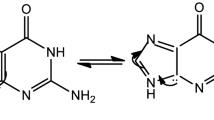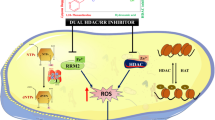Abstract
The compound N-(2-hydroxybenzylidene)-1-ethyl-1, 4-dihydro-7-methyl-4-oxo-1, 8 naphthyridine-3-carbohydrazide (LH) and its Cu (II), Co (II) and Zn (II) complexes were synthesized and characterized. The absorption spectral titrations and competitive DNA binding studies depicted those complexes of title compound bind to CT-DNA through intercalation. Interestingly [Cu (II)-(L2)] showed relatively high binding constant value (6.61 x 105 M−1) compared to [Co (II)-(L2)] (4.378× 105 M−1) and [Zn (II)-(L2)] (3.1x105 M−1). Ligand and its complexes were also examined for DNA nuclease activity against pBR-322 plasmid DNA, which showed that [Cu (II)-(L2)] had the best hydrolytic cleavage property displaying prominent double-strand DNA cleavage. In addition, antioxidant activities of the ligand and its metal complexes investigated through scavenging effects for DPPH radical in- vitro, indicated their potentiality as good antioxidants. The in vitro anti-bacterial study inferred the better anti-bacterial activity of [Cu (II)-(L2)] and this was also correlated theoretically by employing docking studies wherein [Cu (II)-(L2)] displayed good Gold score and Chem score. Finally the in vitro anti- proliferative activity of studied compounds was tested against HeLa and MCF-7 cell lines. Interestingly [Cu (II)-(L2)] displayed lower IC50 value and lower percentage of viability in both HeLa and MCF-7 cell lines.


















Similar content being viewed by others
References
Aggarwal N, Kumar R, Dureja P, Khurana JM (2012) Synthesis of novel nalidixic acid-based 1,3,4-thiadiazole and 1,3,4-oxadiazole derivatives as potent antibacterial agents. Chem Biol Drug Des 79:384–397
Leisher GY, Froelich EJ, Gruett MD, Bailey JH, Brundage PR (1962) 1,8Naphthyridine derivatives. A new Class of Chemotherapeutic Agents. J Med Pharm Chem 5:1063–1065
Tornaletti S, Pedrini AM (1988) Studies on the interaction of 4-quinolones with DNA by DNA unwinding experiments. Biochim Biophys Acta 949:279–287
Grover G, Kini SG (2006) Synthesis and evaluation of new quinazolone derivatives of nalidixic acid as potential antibacterial and antifungal agents. Eur J Med Chem 41:256–262
Aggarwal N, Kumar R, Dureja P, Khurana JM (2011) Synthesis, antimicrobial evaluation and QSAR analysis of novel nalidixic acid based 1,2,4-triazole derivatives. Eur J Med Chem 46:4089–4099
Emmerson AM, Jones AM (2003) The quinolones: decades of development and use. J Antimicrob Chemother 51(suppl 1), 13–20
Crumplin GC, Smith JT (1976) Nalidixic acid and bacterial chromosome replication. Nature 260:643–645
Gellert M, Mizuuchi K, O’dea MH, Nash HA (1976) DNA gyrase: an enzyme that introduces superhelical turns into DNA. Proc Natl Acad Sci U S A 73:3872–3876
Gellert M, Mizuuchi K, O’Dea MH, Itoh T, Tomizawa JI (1977) Nalidixic acid resistance: a second genetic character involved in DNA gyrase activity. Proc Natl Acad Sci U S A 74:4772–4776
Wang JC (1985) DNA topoisomerases. Annu Rev Biochem 54:665–697
Gootz TD, Brighty KE (1996) Fluoroquinolone anti-bacterials: SAR mechanism of action,resistance,and clinical aspects. Med Res Rev 16:433–486
Drlica K, Zhao X (1997) DNA gyrase, topoisomerase-IV and the 4-quinolones. Microbiol Mol Biol Rev 61:377–392
Xiao-Dong Y, jinHua Z (2008) Synthesis and biological activity of hydrazone derivatives containing pyrazole. J Chem Res 9:489–491
Mamolo MG, Falagiani V, Zampieri D, Vio L, Banfi E (2001) Synthesis and anti mycobacterialactivity of [5-(pyridine-2-yl)-1,3,4-thiadiazol-2-yline-hydrathio]acetic acid aryl idene-hydrazide derivatives. Farmaco 56:587–592
Rollas S, Gulerman N, Erdeniz H (2002) Synthesis and antimicrobial activity of some new hydrazones of 4-flurobenzoic acid hydrazide and 3-acetyl-2,5-disubstituted-1,3,4-oxadiazolines. Farmaco 57:171
Kamel AM, Lobna MA, EI-Sayed ML, Mohamed IH, Rania HB (2006) Hydrazones of 2- aryl-quinoline-4-carboxylic acid hydrazides; synthesis and preliminary evaluation as antimicrobial agents. Bioorg Med Chem 14:8675–8682
Ozdemir A, Turan-zitouni G, Kaplancikl ZA, Demirci F, Iscan G (2008) Studies on hydrazone derivatives as antifungal agents. J. Enzyme. Inhib. Med. Chem 23:470–475
Dimmock JR, Vashishtha SC, Stables JP (2000) Anticonvulsant properties of various acetylhydrazones, oxamoyhydrazones and semicarbazones deriveed from aromatic and unsaturated carbonyl compounds. Eur J Med Chem 35:241–248
Kalsi R, Shrimali M, Bhalla TN, Barathwal JP (2006) Synthesis and anti-inflammatory activity of indolyl azetidinones. Indian J Pharm Sci 41:353–359
Melnyk P, Leroux V, Sergheraert C, Grellier P (2006) Design. Synthesuis and in Vitro antimalarial Activity of Acylhydrazone Library Bioorg Med Chem Lett 16:31–35
Patole J, Sandbhor U, Padhey S, Deobagkar DN, Anson CE, Powell A (2003) Structural chemistry and in vitro ant tubercular activity of acetyl pyridine benzoyl hydrazone and its copper complex against mycobacterium smegmatics. Bioorg Med Chem Litt 13:51–55
Tomokazu H.I, Nobuharu A.O, Hiroshi K, Atsushi K. K (1994) Hydrazone derivatives, processes for production thereof, and uses thereof U.S. Patent 5304573
More P.G,. Bhalvankar R.B, Patter S.C, (2001) J. Ind. Chem. Soc 78 (9):474–475
Kabeer AS, Baseer MA, Mote NA (2001) Asian J Chem 13(2):496–500
Song YM, Wu Q, Yang PJ, Luan NN, Wang LF, Liu YM (2006) J Inorg Biochem 100:1685
Kozurkova M, Sabolova D, Janovec L, Mikes J, Koval J, Ungvarsky J, Stefanisinova M, Fedorocko P, Kristian P, Imrich J (2008) Bioorg. Med Chem 16:3976
Tan CP, Liu J, Chen LM, Shi S, Ji LN (2008) J Inorg Biochem 102:1644
Zuber G, Quada Jr JC, Hecht SMJ (1998) Am Chem Soc 120:9368
Hecht SMJ (2000) Nat Protoc 63:158
Metcalfe C, Thomas JA (2003) Chem Soc Rev 32:215
Silvestri A, Barone G, Ruisi G, Lo Giudice MT, Tumminello SJ (2004) Inorg Biochem 98:589
Navarro M, Cisneros-Fajardo EJ, Sierralta A, Fernández-Mestre M, Silva P, Arrieche D, Marchán E (2003) J Biol Inorg Chem 8:401
Corral E, Hotze ACG, Tooke DM, Spek A, Reedijk L (2006) J Inorg Chim Acta 359:830–838
Hotze ACG, Faiz JA, Mourtzis N, Pascu GI, Webber PRA, Clarkson GJ, Yannakopoulou K, Pikramenou Z, Hannon MJ (2006) Dalton Trans 24:3025–3034
Ljubijankic N, Zahirovic A, Turkušic E, Kahrovic E (2013) Croat Chem Acta 86:215–222
Lerman LS (1961) J Mol Biol 3:18–30
Wolfe A, Shimer GH, Meehan T (1987) Biochemistry 26:6392–6936
Dixit N, Koiri RK, Maurya BK, Trigun SK, Höbartner C, Mishra L (2011) J Inorg Biochem 105:256–267
Barton JK, Bertini I, Gray HB, Lippard SJ, Valentine JS (1994) Bioinorganic chemistry. University Science Press, Mill Valley, p. 455
Marmur J (1961) J Mol Biol 3:208–218
Chen GJ, Qiao X, Qiao PQ, Xu GJ, Xu JY, Tian JL, Gu W, Liu X, Yan SP (2011) J Inorg Biochem 105:119–126
Chen X,. Xue L. X, Ju C. C, Wang K. Z (2013) Spectrochim. Acta A Mol Biomol Spectrosc 111: 196–203
Arjmand F, Sayeed F, Muddassir M (2011) J Photochem Photobiol B 103:166–179
Tan J, Wang B, Zhu L (2009) Bioorg Med Chem 17:614–620
Li DD, Tian J-L, Gu W, Liu X, Yan SP (2009) Synthesis, X-ray Crystal Structures, DNA Binding and Nuclease Activities of Two Novel 1,2,4-Triazole-Based CuII Complexes page 5036–5045. doi:10.1002/ejic.200900763
Li D, Tian J, Kou Y, Huang F, Chen G, Gu W, Liu X, Liao D, Cheng P, Yan S (2009) Dalton Trans. 3574–3583
Lakowicz JR, Weber G (1973) Biochemistry 12:4161–4170
Thompson et Al & Mark. A “Arguslab 4.0.1” www.arguslab.com planaria software LLC, Seattle,WA.
Jones G, Willett P, Glen RC (1995) J Mol Biol 245:43
Jones G, Willett P, Glen R. C, Leach A. R, Taylor R. J Mol Biol. 1997, 267, 727.
Nissink J. W. M, Murray C, Hartshorn M, Verdonk M. L, Cole J. C, Taylor R, Proteins: Structure Function Bioinformatics 2002 499, 457.
Verdonk M. L, Cole J. C, Hartshorn M. J, Murray C.W, Taylor R. D. Proteins: Structure Function Bioinformatics. 2003, 52,609.
Acknowledgments
Financial assistance received from the Council of Scientific and Industrial Research, New Delhi, India [grants Ref: file no: 09/132(0791)/2012-EMR-I], is gratefully acknowledged. We would also like to thank Department of Bio-Chemistry, Osmania University, Hyderabad for providing anti-bacterial and cytotoxicity data. We thank to the Department of chemistry, Osmania University Hyderabad for providing the research facilities.
Author information
Authors and Affiliations
Corresponding author
Rights and permissions
About this article
Cite this article
Chennam, K.P., Ravi, M., Ushaiah, B. et al. Synthesis, characterization, DNA interactions, DNA cleavage, radical scavenging activity, antibacterial, anti-proliferative and docking studies of new transition metal complexes. J Fluoresc 26, 189–205 (2016). https://doi.org/10.1007/s10895-015-1701-3
Received:
Accepted:
Published:
Issue Date:
DOI: https://doi.org/10.1007/s10895-015-1701-3




